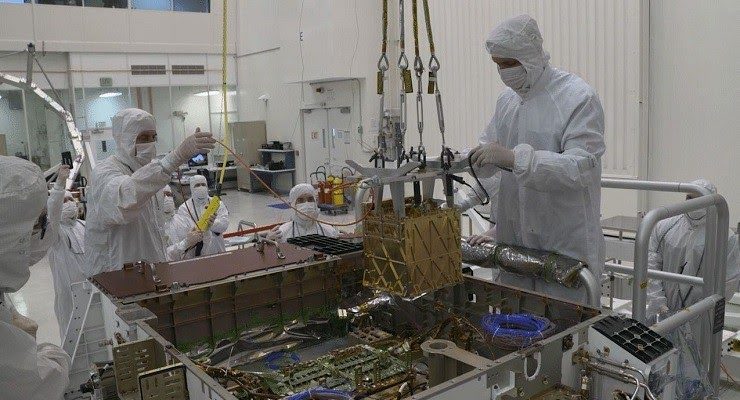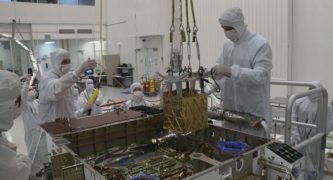
When NASA’s Jet Propulsion Laboratory-built Perseverance Mars rover begins its exploration of the Red Planet in less than three months, it will also embark on a groundbreaking experiment that will try to create oxygen from the thin, mostly carbon dioxide atmosphere there, according to JPL.
Not only is oxygen vital for human survival, it’s a vital component of rocket fuel. And being able to produce fuel on Mars for a return trip, rather than having to ship it all the way from Earth, would be a major milestone toward establishing a human presence on Mars.
“Rocket propellant is the heaviest consumable resource that astronauts will need, so being able to produce oxygen at their destination would make the first crewed trip to Mars easier, safer, and cheaper,” according to a statement issued by JPL. Since rockets consume hundreds of times more oxygen than people do, “Breathing is just a side benefit.”
The box-shaped, gold-plated Mars Oxygen In-Situ Resource Utilization Experiment, or MOXIE, is a side experiment, apart from the Perseverance rover’s primary goal of exploring the geology of Mars, the statement said. “While Perseverance has a suite of instruments geared toward helping achieve that goal, MOXIE is focused solely on the engineering required for future human exploration efforts.”
If successful, the technology developed for MOXIE could ultimately be used for future manned missions.
“MOXIE is designed to make about six to 10 grams of oxygen per hour — just about enough for a small dog to breathe,” JPL MOXIE Systems Engineer Asad Aboobaker said. “A full-scale system geared to make (propellant for the flight home) would need to scale up oxygen production by about 200 times what MOXIE will create.”
The device, barely larger than a toaster, generates a temperature of around 1,470 degrees while converting the Martian atmosphere, which is primarily made of carbon dioxide and only 1 percent as thick as the Earth’s, into oxygen, according to JPL.
“Special 3D-printed nickel alloy parts help distribute the heat within the instrument, while superlight insulation called aerogel minimizes the power needed to keep it at operating temperatures,” the statement said. “The outside of MOXIE is coated in a thin layer of gold, which is an excellent reflector of infrared heat and keeps those blistering temperatures from radiating into other parts of Perseverance.”
Perseverance is scheduled to touch down on Mars on Feb. 18.
More information on the MOXIE experiment is available online at mars.nasa.gov/mars2020/spacecraft/instruments/moxie. More information on the Perseverance Mars rover and its mission can be found at jpl.nasa.gov/missions/mars-2020-perseverance-rover.














 0 comments
0 comments


